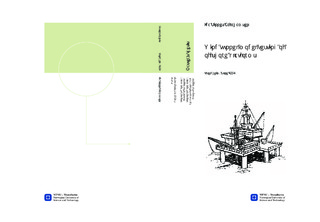| dc.contributor.advisor | Sætran, Lars | nb_NO |
| dc.contributor.author | Abrahamsen, Ida Sinnes | nb_NO |
| dc.date.accessioned | 2014-12-19T11:48:51Z | |
| dc.date.available | 2014-12-19T11:48:51Z | |
| dc.date.created | 2012-11-08 | nb_NO |
| dc.date.issued | 2012 | nb_NO |
| dc.identifier | 566139 | nb_NO |
| dc.identifier | ntnudaim:7530 | nb_NO |
| dc.identifier.uri | http://hdl.handle.net/11250/234781 | |
| dc.description.abstract | The purpose of this thesis is to highlight some of the areas of interest when it comes to wind tunnel experimenting of offshore platforms regarding stability concerns such as critical angles and wind overturning moment. Some important factors include design of tower geometry, the effect of surface roughness on drag, methods of calculating blockage corrections of wall interference and the generation of an atmospheric boundary layer to resemble full-scale conditions. Data obtained from wind tunnel experiments with two different models have been compared and discussed according to the areas of interest as mentioned above. Testing of platforms was done at NTNU with a six-component balance, measuring forces of drag, side and lift and moment of pitch, roll and yaw with increments of 10° the whole 360° to account for wind coming from all directions. Two geometries were tested for the tower members, one with a circular cross-section which was smaller than scale and another with a square cross-section in correct scale. There was noticeable change in both global forces and moments. Blockage corrections caused by wall interference were researched from different sources and reviewed, and it was apparent that it is still an area with lots of uncertainty. Consensus was that and area ratio of maximum 0.10 should be abided in any case and that the simplified method of Pope is widely used. An atmospheric boundary layer was simulated at NTNU using trial-and-error and the validity of this was confirmed by comparing experimental data with theoretical data regarding the velocity profile, turbulence intensity and energy spectrum. For the experiments of surface roughness on an individual circular cylinder and the corresponding change in drag, a simple three-component balance was used. The cylinder represents the platform legs. Two types of surface roughness were tested, first a plain wooden surface and then with a layer of coarse sand applied to the whole surface. It was seen that the rougher surface provoked an earlier transition to a turbulent boundary layer, causing an earlier drop in drag which is a better fit to estimated full-scale characteristics.Finally, the element that contributes most to the inaccuracy of the experiments is shown to be the difficulty of geometric similarity. Further investigation is needed. | nb_NO |
| dc.language | eng | nb_NO |
| dc.publisher | Institutt for energi- og prosessteknikk | nb_NO |
| dc.subject | ntnudaim:7530 | no_NO |
| dc.subject | MTPROD produktutvikling og produksjon | no_NO |
| dc.subject | Energi-, prosess- og strømningsteknikk | no_NO |
| dc.title | Wind tunnel model testing of offshore platforms | nb_NO |
| dc.type | Master thesis | nb_NO |
| dc.source.pagenumber | 82 | nb_NO |
| dc.contributor.department | Norges teknisk-naturvitenskapelige universitet, Fakultet for ingeniørvitenskap og teknologi, Institutt for energi- og prosessteknikk | nb_NO |

